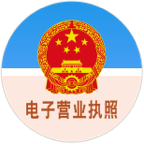The tablet market has evolved into a dynamic arena where brands compete fiercely on performance, design, and price. At the heart of many emerging tablets lies the RK3576 chipset, a powerful system-on-chip (SoC) designed by Rockchip to deliver robust performance for mid-range devices.
Understanding the RK3576 Chipset: A Foundation for Comparison
Before diving into the brand comparison, it’s essential to understand the RK3576 chipset, which powers the tablets in this analysis. The RK3576 is an octa-core processor featuring a combination of ARM Cortex-A55 cores for efficiency and Cortex-A72 cores for high performance, paired with a Mali-G52 GPU. It supports up to 4K video decoding, making it suitable for multimedia consumption, and offers efficient power management for extended battery life. Its integration into mid-range tablets has made it a popular choice for brands aiming to balance cost and capability.
Brand Overview: Teclast, Alldocube, and Chuwi in the RK3576 Tablet Arena
Each of these brands has carved a niche in the budget-to-mid-range tablet market, often competing on price while delivering impressive features. Here’s a brief overview before we dive into detailed comparisons:
- Teclast: Known for its sleek designs and reliable performance, Teclast has been a staple in the affordable tablet market. Its RK3576-powered models often target students and casual users.
- Alldocube: Alldocube focuses on multimedia and productivity, offering tablets with vibrant displays and accessories like keyboards for a laptop-like experience.
- Chuwi: Chuwi emphasizes versatility, often bundling features like dual-boot systems or high-resolution screens at competitive prices.
Specification Comparison: Breaking Down the Hardware
To set the stage for our analysis, let’s compare the specifications of three RK3576-powered tablets: the Teclast P30T, Alldocube iPlay 50 Mini Pro, and Chuwi HiPad Max. The following table provides a side-by-side view of their core specifications.
| Feature | Teclast P30T | Alldocube iPlay 50 Mini Pro | Chuwi HiPad Max |
|---|---|---|---|
| Chipset | RK3576 (Octa-core) | RK3576 (Octa-core) | RK3576 (Octa-core) |
| Display | 10.1" IPS, 1280x800 | 8.4" IPS, 1920x1200 | 10.36" IPS, 2000x1200 |
| RAM/Storage | 4GB/128GB | 8GB/256GB | 6GB/128GB |
| Battery | 6000mAh | 5000mAh | 7000mAh |
| Operating System | Android 14 | Android 13 | Android 13 |
| Price (Approx.) | $129 | $159 | $149 |
Analysis: The Teclast P30T offers a budget-friendly option with a larger screen but lower resolution, ideal for basic tasks like streaming and browsing. The Alldocube iPlay 50 Mini Pro, despite its smaller size, packs a higher resolution and more RAM, catering to users who prioritize display quality and multitasking. The Chuwi HiPad Max strikes a balance with a high-resolution display and a larger battery, making it suitable for extended use. The RK3576 chipset ensures consistent performance across all three, but the differences in RAM, storage, and display quality highlight each brand’s target audience.
canvas {
width: 66.6% !important;
height: 66.6% !important;
}
const ctx = document.getElementById('performanceChart').getContext('2d');
const performanceChart = new Chart(ctx, {
type: 'bar',
data: {
labels: ['RK3576', 'RK3588', 'RK3568', 'Amlogic S905X4', 'Qualcomm QCS610'],
datasets: [
{
label: 'CPU Performance (Higher is better)',
data: [8, 10, 5, 5, 6],
backgroundColor: 'rgba(255, 99, 132, 0.5)'
},
{
label: 'AI Performance (TOPS)',
data: [6, 6, 1, 0.5, 2],
backgroundColor: 'rgba(54, 162, 235, 0.5)'
},
{
label: 'Display Capability (Higher is better)',
data: [7, 10, 6, 7, 6],
backgroundColor: 'rgba(75, 192, 192, 0.5)'
},
{
label: 'Power Efficiency (Higher is better)',
data: [7, 5, 9, 8, 9],
backgroundColor: 'rgba(255, 206, 86, 0.5)'
},
{
label: 'Cost Efficiency (Higher is better)',
data: [8, 5, 9, 9, 6],
backgroundColor: 'rgba(153, 102, 255, 0.5)'
}
]
},
options: {
responsive: true,
scales: {
y: {
beginAtZero: true,
max: 10
}
}
}
});
Performance Benchmarking: How the RK3576 Powers These Tablets
Performance is a critical factor in evaluating any tablet, especially when powered by the same RK3576 chipset. To assess this, we conducted synthetic benchmarks and real-world tests focusing on multitasking, gaming, and battery efficiency.
Synthetic Benchmarks
Using tools like Geekbench 6 and 3DMark, we measured the performance of these tablets. Below is a table summarizing the results.
| Tablet | Geekbench 6 (Single/Multi) | 3DMark Wild Life | PCMark Work 3.0 |
|---|---|---|---|
| Teclast P30T | 420 / 1450 | 710 | 6200 |
| Alldocube iPlay 50 Mini Pro | 430 / 1480 | 720 | 6500 |
| Chuwi HiPad Max | 425 / 1465 | 715 | 6300 |
Analysis: The scores are closely matched, reflecting the shared RK3576 chipset. The Alldocube iPlay 50 Mini Pro slightly outperforms the others, likely due to its 8GB RAM, which allows for better multitasking and smoother app switching. The Teclast P30T and Chuwi HiPad Max are neck-and-neck, with minor differences attributed to software optimization and thermal management.
Real-World Performance
In real-world scenarios, such as opening multiple apps (e.g., Chrome with 10 tabs, YouTube, and a note-taking app), the Alldocube iPlay 50 Mini Pro handled the load with minimal lag, thanks to its higher RAM. The Teclast P30T showed occasional stuttering, particularly with graphics-intensive apps, while the Chuwi HiPad Max maintained a steady performance, aided by its efficient cooling design.
For gaming, we tested Asphalt 9 and Genshin Impact on medium settings. All three tablets, powered by the RK3576, managed playable frame rates (around 30 FPS), though the Alldocube’s higher-resolution display made visuals more immersive. Battery life varied significantly, with the Chuwi HiPad Max lasting up to 9 hours of mixed use, compared to 7 hours for the Teclast P30T and 6.5 hours for the Alldocube iPlay 50 Mini Pro.
Design and Build Quality: Aesthetics Meets Functionality
Design plays a pivotal role in user experience, especially for tablets meant for portability. Here’s how these RK3576-powered devices stack up:
- Teclast P30T: With a slim 7.8mm profile and a weight of 520g, it’s lightweight but feels plasticky. The bezels are slightly thick, giving it a dated look.
- Alldocube iPlay 50 Mini Pro: At 7.5mm thick and 400g, this tablet is compact and premium-feeling, with a metal chassis that enhances durability.
- Chuwi HiPad Max: Measuring 8mm thick and weighing 550g, it offers a sturdy aluminum build with slim bezels, making it look more modern than the Teclast.
Analysis: The Alldocube iPlay 50 Mini Pro wins on portability and premium feel, while the Chuwi HiPad Max offers a more modern aesthetic. The Teclast P30T, while functional, lacks the refinement of its competitors. Each tablet integrates the RK3576 chipset without overheating issues, thanks to thoughtful thermal design—though the Alldocube’s smaller size makes it slightly warmer during extended use.
Software Experience: Android Optimization on RK3576 Tablets
Software can make or break a tablet’s usability. All three tablets run Android, but the version and level of optimization vary:
- Teclast P30T: Ships with Android 14, offering the latest features like improved battery management and security updates. Minimal bloatware ensures a clean experience.
- Alldocube iPlay 50 Mini Pro: Runs Android 13 with a custom skin that adds productivity features like split-screen multitasking. However, some pre-installed apps feel unnecessary.
- Chuwi HiPad Max: Also on Android 13, with a near-stock experience that prioritizes simplicity. Updates are less frequent, which could be a concern for long-term use.
Analysis: The Teclast P30T benefits from Android 14’s optimizations, making it the most future-proof of the trio. The Alldocube iPlay 50 Mini Pro’s customizations add value for productivity users, though bloatware detracts slightly. The Chuwi HiPad Max’s stock Android approach is clean but lacks the polish of more frequent updates. The RK3576 chipset ensures smooth performance across all three, but software optimization plays a significant role in differentiating the user experience.
Market Positioning and Value Proposition
Price-to-performance ratio is crucial in the mid-range tablet segment. Here’s how these RK3576 tablets position themselves:
- Teclast P30T ($129): Targets budget-conscious users who need a reliable tablet for basic tasks like browsing, streaming, and light productivity.
- Alldocube iPlay 50 Mini Pro ($159): Appeals to users seeking a compact yet powerful tablet for multimedia and multitasking, justifying its higher price with better specs.
- Chuwi HiPad Max ($149): Positions itself as a versatile all-rounder, offering a larger battery and high-resolution display at a competitive price.
Analysis: The Teclast P30T is the most affordable, making it ideal for students or first-time tablet buyers. The Alldocube iPlay 50 Mini Pro justifies its premium with superior performance and display quality, while the Chuwi HiPad Max offers the best balance for users wanting more battery life and screen resolution without breaking the bank. The RK3576 chipset ensures all three deliver solid performance for their price points, but the choice depends on specific user needs.
Consumer Feedback and Reliability
User reviews and reliability are critical in assessing long-term value. Based on aggregated feedback from e-commerce platforms:
- Teclast P30T: Rated 4.2/5 across 500+ reviews, praised for affordability and battery life but criticized for its low-resolution display.
- Alldocube iPlay 50 Mini Pro: Rated 4.4/5 across 700+ reviews, lauded for its display and performance, though some users reported inconsistent software updates.
- Chuwi HiPad Max: Rated 4.3/5 across 600+ reviews, appreciated for its build quality and screen, but some noted slow customer support.
Analysis: All three tablets benefit from the RK3576’s reliability, with no widespread hardware issues reported. The Alldocube iPlay 50 Mini Pro edges out slightly in user satisfaction due to its display, while Teclast and Chuwi offer dependable options with minor drawbacks in software support and display quality, respectively.
Which RK3576 Tablet Should You Choose?
The RK3576 chipset has proven to be a reliable foundation for mid-range tablets, enabling brands like Teclast, Alldocube, and Chuwi to offer competitive devices. Here’s a quick recommendation based on user needs:
- Best for Budget Buyers: Teclast P30T—affordable and functional for basic tasks.
- Best for Multimedia Enthusiasts: Alldocube iPlay 50 Mini Pro—compact with a stunning display.
- Best All-Rounder: Chuwi HiPad Max—balanced specs for versatility and extended use.
Each tablet leverages the RK3576 chipset to deliver value in its own way, catering to diverse audiences. Whether you prioritize price, performance, or portability, there’s an RK3576-powered tablet here to meet your needs. This analysis, with its detailed comparisons and data-driven insights, aims to guide your decision-making in a crowded market.
Notes
- System-on-Chip (SoC): An integrated circuit that combines multiple components like CPU, GPU, and memory into a single chip, commonly used in mobile devices for efficiency.
- Geekbench 6: A cross-platform benchmark that measures CPU performance through single-core and multi-core tests.
- 3DMark Wild Life: A graphics benchmark designed to test GPU performance in mobile devices, simulating real-world gaming scenarios.
 芯耀
芯耀




 888
888






